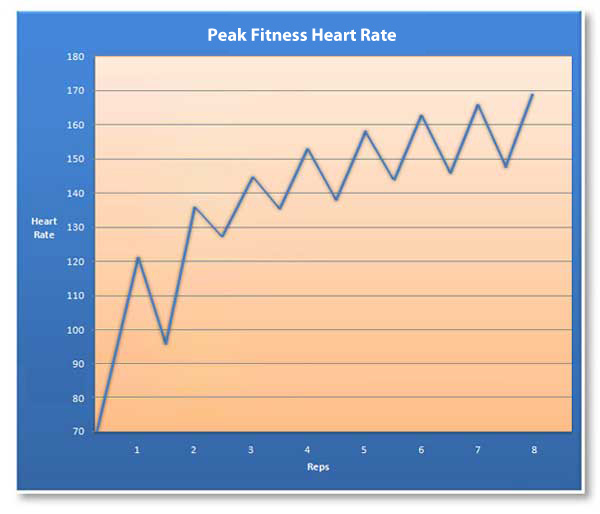Here is a summary of what a typical interval training routine might look like when you're just starting out. This can be completed in about 20 minutes:
- Warm up for three minutes.
Exercise as hard and fast as you can for 30 seconds. Ideally, you should push yourself to "failure" — this is the part of the exercise where you can no longer maintain good form, but still be able to perform another repetition.
When you reach failure, it would be very difficult, if not impossible, for you to continue the exercise for another 10 seconds, as you just don't have that much oxygen left to contract your muscles.
You should be gasping for breath and feel like you couldn't possibly go on another few seconds. It is better to use lower resistance and higher repetitions to increase your heart rate.
- Recover for 90 seconds, still moving but at a slower pace and with decreased resistance.
Repeat the high-intensity exercise and recovery for two to three repetitions. Eventually, you'll want to do a total of eight of the high-intensity intervals, but work up to this gradually.
When you're a beginner, you'll probably only be able to do one to two repetitions, and that is all right. If you try to start out with eight repetitions right away, you run the risk of injuring yourself.
As you get fitter, just keep adding repetitions until you're eventually doing eight during your 20-minute session. However, this will likely take a while and won't be until you've progressed to the intermediate or advanced workout level.
- Start with only one Peak Fitness workout per week and never exceed three per week.
Using a Recumbent Bike
When you do Peak Fitness exercises, you can make use of a recumbent bike or elliptical. You can even try swimming or sprinting outdoors (be extra careful when doing this to avoid injury). Treadmills are not recommended as they do not adjust speed rapidly enough and can be dangerous.
If you're a beginner, using a recumbent bike is recommended. You can set the program to "Manual" for the timer to count up — it is much easier to switch between high-intensity exercise and your 90-second recovery periods when the time is counting up, not down. For a demonstration of a Peak Fitness routine using a recumbent bike, watch this video:
Choosing the Right Recumbent Bike
Exercise bikes have long been a staple in indoor exercise programs. A semi-recumbent bike particularly combines the best features of an upright bike and a recumbent bike.
A semi-recumbent bike is easier-to-mount and straddle than an upright bike, and offers step-through access and low comfortable handlebars. Unlike what's offered by its traditional upright counterpart, a semi-recumbent workout involves the gluteal muscles of butt for a sleeker, slimmer look. Look for a high-quality semi-recumbent bike, which can offer the following potential benefits:
- Helps increase or maintain flexibility
- Promotes optimal circulation throughout your entire body
- Helps maintain strength and endurance in your leg muscles
- Helps burn calories and promote your ideal body weight
- Helps support cardiovascular fitness
- Slims and tightens your legs, thighs, and butt
Using a Heart Rate Monitor
To give you an idea of how your heart rate will "peak" during interval cycles, here's a chart showing you the status of my heart rate while doing Peak Fitness on a recumbent bike.

Fig. 3 – My heart rate while doing Peak Fitness on a recumbent bike
Accuracy is key in Peak Fitness exercises, because there is, for example, a very huge difference between 166 and 168 beats per minute. It is impossible to count this manually if your heart rates have exceeded 127 to 175 beats per minute — and especially difficult when you're out of breath!
I strongly suggest investing in a chest strap heart rate monitor to determine if you're working with the right intensity. You're on the right track if you exceed your maximum heart rate (which is 220 minus your age) by five or 10 beats. When you've reached your maximum heart rate, you may feel lightheaded and/or very short of breath. Nevertheless, in about 30 to 60 seconds, your body will catch up with you and you'll be back to normal.